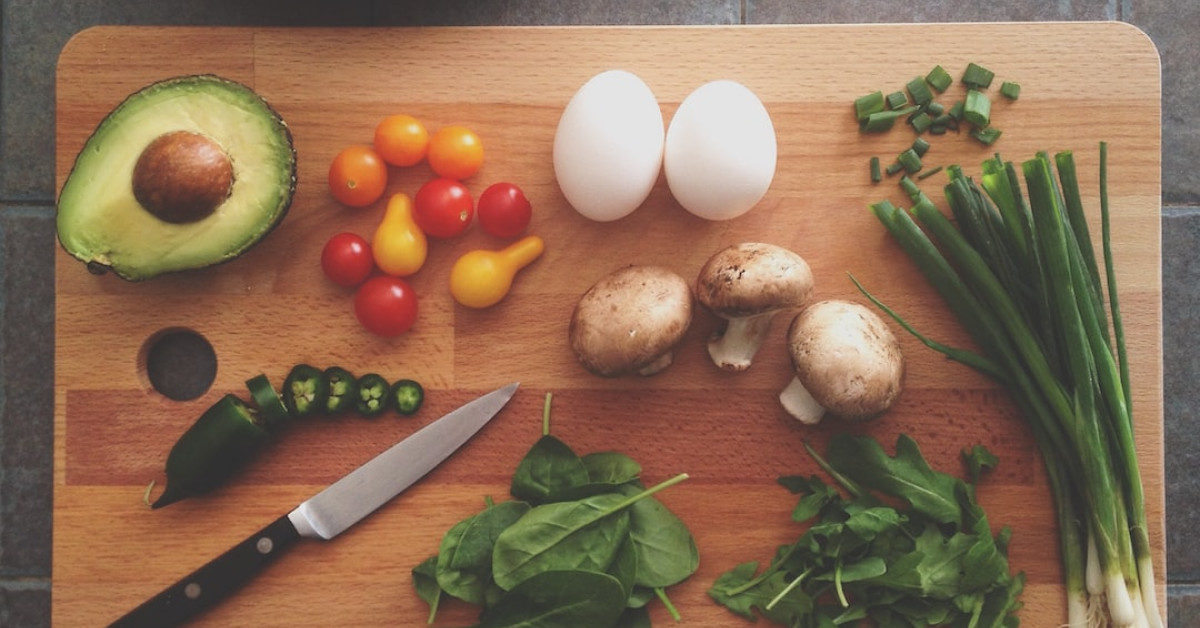Are you ready to take your culinary skills to the next level? Whether you’re a seasoned chef or a cooking enthusiast, there’s always something new to learn in the kitchen. In this article, we will share 43+ expert cooking tips and techniques that will help you master the art of cooking. From knife skills to flavor combinations, these insider secrets will elevate your cooking game and impress your family and friends. So, grab your apron and get ready to become a culinary master!
Mastering Knife Skills
-
Invest in a high-quality chef’s knife: A good chef’s knife is the most important tool in your kitchen. It should feel comfortable in your hand and be sharp enough to cut through ingredients effortlessly.
-
Hold the knife properly: Grip the handle firmly with your dominant hand, placing your thumb on the side of the blade for stability. Wrap your other hand around the handle to guide the knife.
-
Learn the basic knife cuts: Practice the essential knife cuts, such as the julienne (matchstick-shaped), dice (cubed), and chiffonade (thin strips) cuts. Mastering these techniques will make your cooking more efficient and professional-looking.
-
Keep your knives sharp: A sharp knife is safer and more effective than a dull one. Invest in a knife sharpener and regularly hone your knives to maintain their sharpness.
Enhancing Flavors
-
Use salt wisely: Salt is the key to enhancing flavors in your dishes. Remember to season as you go, layering the salt throughout the cooking process. Taste as you cook to avoid oversalting.
-
Balance flavors with acid: Acidic ingredients like lemon juice or vinegar can brighten and balance the flavors of a dish. Use them sparingly to add a refreshing tang.
-
Experiment with herbs and spices: Be adventurous with your herb and spice collection. Use different combinations to add depth and complexity to your dishes.
-
Toast your spices: Toasting spices before using them can elevate their flavors. Simply heat them in a dry pan until fragrant, but be careful not to burn them.
Essential Techniques
-
Preheat your pans: Before adding ingredients to a hot pan, make sure it’s properly preheated. This will help achieve a nice sear or caramelization.
-
Master the art of sautéing: Sautéing involves cooking food quickly over high heat. Use a hot pan, a small amount of oil, and move the ingredients continuously to avoid burning.
-
Get to know your oven: Become familiar with your oven’s temperature accuracy. Use an oven thermometer to ensure precise cooking.
-
Rest meat before slicing: Allow cooked meat to rest for a few minutes before slicing to retain its juices. This will result in a tender and flavorful dish.
Achieving Perfect Texture
-
Brine poultry for tenderness: Brining chicken or turkey before cooking helps retain moisture and adds flavor. Soak the meat in a mixture of salt, sugar, and water for a few hours before cooking.
-
Steam vegetables to retain nutrients: Steaming vegetables preserves their nutrients and vibrant colors. Invest in a steamer basket or use a colander over a pot of simmering water.
-
Make homemade stocks: Homemade stocks are the secret to rich and flavorful soups, stews, and sauces. Save vegetable scraps or bones from meat to make your own stock.
-
Experiment with different cooking techniques: Try roasting, grilling, braising, or poaching to experience different textures and flavors in your dishes.
Maximizing Efficiency
-
Practice mise en place: Mise en place is a French term that means “everything in its place.” Before you start cooking, gather and prep all your ingredients to make the cooking process smoother and more efficient.
-
Use kitchen timers: Set timers to avoid overcooking or burning your food. This is especially useful when multitasking in the kitchen.
-
Clean as you cook: A clean workspace is essential for efficient cooking. Wash utensils and cutting boards as you go to minimize clutter and make cleanup easier.
-
Invest in quality cookware: High-quality cookware distributes heat evenly, preventing hot spots that can result in uneven cooking. Look for pans with a heavy bottom and durable non-stick coating.
Food Safety
-
Wash your hands: Always wash your hands thoroughly before and after handling food to prevent cross-contamination.
-
Use separate cutting boards: Use separate cutting boards for raw meat, fruits and vegetables, and cooked foods to avoid cross-contamination of bacteria.
-
Cook food to proper temperatures: Use a food thermometer to ensure meat and poultry are cooked to safe internal temperatures. This helps prevent foodborne illnesses.
-
Store food properly: Follow proper storage guidelines to maintain food freshness and prevent spoilage. Use airtight containers and label leftovers with dates.
Presentation Tips
-
Plate with care: Take the time to arrange your food on the plate in an aesthetically pleasing manner. Consider shapes, colors, and textures to create a visually appealing dish.
-
Garnish with herbs: Add a final touch to your plated dishes with a sprinkle of fresh herbs. This not only adds flavor but also enhances the overall appearance.
-
Use colorful ingredients: Incorporate a variety of colorful ingredients to make your dishes visually appealing. Think of red tomatoes, green herbs, or vibrant spices.
-
Experiment with plating styles: There are various plating styles to explore, such as the classic stack, smear, or scattered arrangement. Let your creativity shine through your plating.
Flavor Combinations
-
Sweet and savory: Combining sweet and savory flavors can create a harmonious balance in your dishes. Think of dishes like honey-glazed salmon or teriyaki chicken.
-
Acid and fat: The combination of acid (such as lemon juice or vinegar) and fat (such as butter or olive oil) can create a satisfying contrast in flavors.
-
Spice and sweetness: Adding a touch of spice to a sweet dish can create an exciting flavor experience. Try sprinkling cinnamon on your morning oatmeal or adding a pinch of cayenne to your hot chocolate.
-
Umami boost: Umami is the fifth taste, known for its savory and rich flavor. Enhance umami flavors in your dishes by using ingredients like mushrooms, soy sauce, or Parmesan cheese.
Expert Tips and Tricks
-
Make your own vinaigrette: Skip store-bought dressings and make your own vinaigrette by combining oil, vinegar or citrus juice, and your choice of seasonings. Customize it to your taste!
-
Use the right cooking oil: Different oils have different smoke points and flavors. Use high smoke point oils like vegetable or avocado oil for high-heat cooking and olive oil for dressings and low-heat cooking.
-
Don’t overcrowd the pan: When sautéing or stir-frying, avoid overcrowding the pan. Overcrowding leads to steaming rather than browning the ingredients.
-
Rest dough before baking: Allow dough to rest before baking, especially for bread and pastry recipes. This allows the gluten to relax and results in a lighter and fluffier end product.
Common Cooking Mistakes to Avoid
-
Overmixing batter: Overmixing can lead to tough baked goods. Mix until the ingredients are just combined for light and fluffy results.
-
Not preheating the oven: Preheating the oven is crucial for even cooking. Always preheat according to the recipe’s instructions.
-
Skipping the recipe steps: Follow the recipe steps carefully, especially when baking. Baking is a science, and even small variations can produce different results.
-
Rushing meat caramelization: When searing meat, give it enough time to develop a caramelized crust before flipping. This adds flavor and texture to the dish.
Comparison Table - Types of Knives
Here is a comparison table that highlights the different types of knives and their uses:
| Knife | Use |
|---|---|
| Chef’s Knife | All-purpose knife for chopping, slicing, and dicing |
| Paring Knife | Precise tasks like peeling and trimming |
| Bread Knife | Serrated blade for slicing bread and delicate pastries |
| Santoku Knife | Japanese-style knife for slicing, dicing, and mincing |
| Utility Knife | Versatile knife for small to medium tasks in the kitchen |
| Boning Knife | Remove bones from meat and poultry |
| Steak Knife | Serrated knife for cutting cooked meat |
| Cleaver | Heavy-duty knife for chopping through bones and dense ingredients |
| Fillet Knife | Flexible blade for filleting fish and deboning meat |
Conclusion
With these 43+ cooking tips food and drink pairings techniques, you are well on your way to becoming a culinary master. From mastering knife skills to enhancing flavors and maximizing efficiency, these expert tips will take your cooking to the next level. Remember to experiment, have fun, and don’t be afraid to make mistakes. The joy of cooking lies in the journey of learning and improving. So, put on your apron and start creating delicious masterpieces in your kitchen today!










